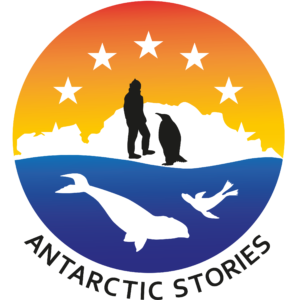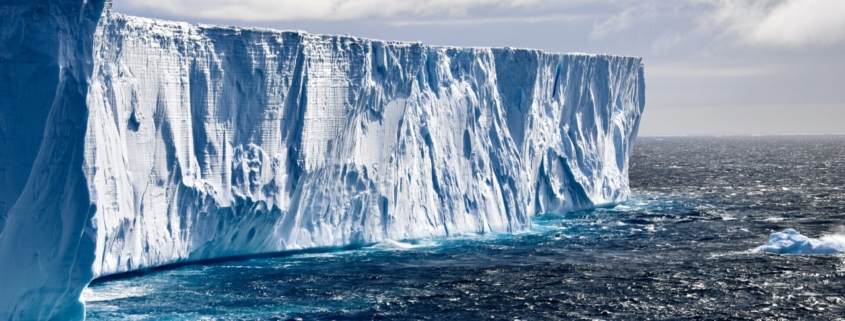Active layer and permafrost thermal regimes in the ice-free areas of Antarctica
Abstrac
Ice-free areas occupy <0.5% of Antarctica and are unevenly distributed across the continent. Terrestrial ecosystem dynamics in ice free areas are strongly influenced by permafrost and the associated active layer. These features are the least studied component of the cryosphere in Antarctica, with sparse data from permanent study sites mainly providing information related to the ground thermal regime and active layer thickness (ALT). One of the most important results of the International Polar Year (IPY, 2007/08) was an increase in ground thermal regime monitoring sites, and consequently our knowledge of Antarctic permafrost dynamics. Now, 15 years after the IPY, we provide the first comprehensive summary of the state of permafrost across Antarctica, including the sub-Antarctic Islands, with analyses of spatial and temporal patterns of the dominant external factors (climate, lithology, biota, and hydric regime) on the ground thermal regime and active layer thickness. The mean annual ground temperatures of the active layer and uppermost part of the permafrost in Antarctica remain just below 0 °C in the warmest parts of the Antarctic Peninsula, and were below −20 °C in mountainous regions of the continent. The ALT varies between a few cm in the coldest, mountainous, parts of the Transantarctic Mountains up to >5 m in bedrock sites in the Antarctic Peninsula. The deepest and most variable ALTs (ca. 40 to >500 cm) were found in the Antarctic Peninsula, whereas the maximum ALT generally did not exceed 90 cm in Victoria Land and East Antarctica. Notably, found that the mean annual near-surface temperature follows the latitudinal gradient of −0.9 °C/deg. (R2 = 0.9) and the active layer thickness 3.7 cm/deg. (R2 = 0.64). The continuous permafrost occurs in the vast majority of the ice-free areas in Antarctica. The modelling of temperature on the top of the permafrost indicates also the permafrost presence in South Orkneys and South Georgia. The only areas where deep boreholes and geophysical surveys indicates discontinuous or sporadic permafrost are South Shetlands and Western Antarctic Peninsula.
Introduction
The Antarctic ice-free environments constitute one of the rarest terrestrial ecosystems on Earth. The total ice-free surface in Antarctica is estimated to extend from ca. 45,000 to 70,000 km2 (Vieira et al., 2010; Terauds and Lee, 2016; Lee et al., 2017; Brooks et al., 2019; Gerrish et al., 2020), which represents less than 0.5% of the surface of the Antarctic continent. The ice-free areas consist of a mosaic of surfaces varying from very small rocky outcrops (< 0.1 km2) and nunataks, up to large oases (> 100 km2) distributed along the coastlines and isolated areas in the interior of the continent. The relief of the ice-free areas has been formed over time scales ranging from millions of years, to the accelerated glacial retreat detected in some areas over the last few decades. As a result, the ice-free environments have been shaped by a combination of glacial, periglacial, paraglacial, and other geomorphic processes, producing a variety of landforms (e.g. Ruiz-Fernández et al., 2019; Oliva and Ruiz-Fernández, 2020).
Permafrost and seasonally thawed active layer are key elements of the cryosphere in Antarctic ice-free environments (Ugolini and Bockheim, 2008). The presence or absence of permafrost is of importance for geomorphological, soil, hydrological, and edaphic processes, and terrestrial ecosystem dynamics in Antarctica (e.g. Guglielmin et al., 2014a). Therefore, the thickness of the active layer, or permafrost presence, are key descriptors of Antarctic terrestrial environments. As active layer thickness (ALT) and the distribution of permafrost are sensitive to climate variability, warming, as recorded for the Antarctic Peninsula over the second half of the 20th century (Turner et al., 2020), may lead to a deepening of the active layer and permafrost degradation that, in turn, triggers changes in soil thermal and hydrological regimes. Furthermore, shifts in temperature and moisture regimes affect the abundance of biota (e.g. Convey and Peck, 2019). Permafrost underlies most of the Antarctic continent. The vast majority comprises subglacial permafrost, in both non-cryotic and cryotic forms, below cold- and warm-based glaciers (e.g. Dawson et al., 2022). However, it is unclear whether permafrost is present below subglacial lakes (Dawson et al., 2022), and the extent of submarine permafrost, which has been reported in some areas in Antarctica (e.g.; Guglielmin et al., 2014b) is also poorly understood. In ice-free terrain, permafrost is mostly continuous and absent only in coastal fringes of the western Antarctic Peninsula (Bockheim et al., 2013).
Major progress in Antarctic active layer and permafrost research began during the International Polar Year in 2007/08, when more than 50 new boreholes shallower than 2 m were drilled across the Antarctic continent (Vieira et al., 2010). Since then, the main research topics have aimed at characterizing the ground thermal regime and active layer thickness under the effect of different factors including; atmospheric temperature (e.g. Adlam et al., 2010; Lacelle et al., 2016), snow cover (e.g., Guglielmin et al., 2014b; de Pablo et al., 2017; Ramos et al., 2020; Farzamian et al., 2020; Hrbáček et al., 2021a), lithological conditions (Hrbáček et al., 2017a, Hrbáček et al., 2017b), topography (Carshalton et al., 2022; Chaves et al., 2017; Ferreira et al., 2017;; Francelino et al., 2011; Goyanes et al., 2014; Oliva et al., 2017a; Vieira and Ramos, 2003) or vegetation (Michel et al., 2012; Vieira et al., 2014; Hrbáček et al., 2020a; Cannone et al., 2021). Insights into spatial variability of the active layer mostly come from the monitoring sites of the Circumpolar Active Layer Monitoring – South (CALM-S) programme (Brown et al., 2000; Guglielmin, 2006). Only a few CALM-S sites have been installed in Antarctica due to the hard ground surface conditions (i.e. mostly bedrock, frost-shattering deposits or stony tills) that prevent mechanical probing or other means of spatial measurement of ALT (Guglielmin, 2006; Vieira et al., 2010; de Pablo et al., 2013, de Pablo et al., 2014, de Pablo et al., 2018; Guglielmin et al., 2014a; Ramos et al., 2017; Hrbáček et al., 2017a, Hrbáček et al., 2021a, Hrbáček et al., 2021b). Less attention has been given to the thermal state of the deeper permafrost layers. Due to logistical and technical constraints, only a few boreholes have been drilled to reach the depth of zero annual amplitude, typically 10–20 m (Biskaborn et al., 2019).
The harsh climate, environmental conditions, and remoteness of Antarctica, and the technical and logistical difficulties, limit active layer and permafrost research. Thus publications are often fragmented covering short-time, or limited spatial scales. Therefore, we provide a synthesis of the literature on topics related to the active layer thermal regime, active layer thickness, and the permafrost thermal regime, over the last decade, across Antarctica. Particularly, we set three major objectives, which allow us to comprehensively describe the spatial-temporal patterns of the active layer and permafrost in Antarctica:
- 1)Provide a synthesis of the main results describing active layer and permafrost thermal dynamics in Antarctica.
- 2)Assess the spatial variability of the Antarctic active layer and permafrost thermal regime.
- 3)Determine the role of the major parameters driving the thermal state of the active layer and permafrost.
Section snippets
Geographical analysis
The area of interest of this review includes the Antarctic continent and the surrounding sub-Antarctic Islands. We defined four main regions and twelve sub-regions based on the geographical and climatic conditions (Table 1). A description of each area is provided in the Results section. To determine the total area of each ice-free region, we followed Brooks et al. (2019) and used the combination of most recent data of automatically derived rock outcrops for Antarctica from Landsat-8 in high
Antarctic Peninsula region
The Antarctic Peninsula region (AP) forms the northernmost tip of the Antarctica continent. The region, including the neighbouring sub-Antarctic islands (SAI), is located south of South America, between latitude 60°S and 75 and longitude 44°W to 75°W. The AP region, including the SAI, exceeds 540,000 km2, of which only ca. 9500 km2 constitute ice-free terrain (Table 1). Considering the geographical diversity of the AP, we set three major sub-regions – South Shetland Islands (SSI) Western
Discussion
Permafrost in Antarctica is widespread in ice-free regions and is only absent near sea level in some areas across the South Shetland Islands and Western Antarctic Peninsula (Bockheim et al., 2013, Correia et al., 2017; Ferreira et al., 2017), as well as sub-Antarctic islands north of 60°S, where patchy permafrost occurs only in elevated areas (Obu et al., 2020). Permafrost thickness naturally ranges from a few meters on the warmest Antarctic part in the West Antarctic Peninsula (Bockheim et
Monitoring site density and data availability
Sites for monitoring the active layer and the topmost permafrost remain scarce in Antarctica. Vieira et al. (2010) estimated the total number of boreholes to 73 mostly located in the AP and MDV. In this overview, we identified more than 80 profiles deeper than 50 cm or reaching the permafrost table (Table 2, Table 3, Table 4, Table 5, Table 6) providing temperature data for the active layer and the topmost permafrost. Yet, we expect the number of all boreholes installed in Antarctica is much
Conclusions
In spite of some flaws, there has been obvious progress in permafrost and active layer research in Antarctica since the International Polar Year in 2007/08. This overview evaluated the current state of the research and discussed challenges for future research. On-going research is important to determine medium term (decadal) changes and to help better predict what changes may occur in the longer-term. In regions such as the South Shetland or sub-Antarctic Islands, where the mean annual
Uncited reference
Guglielmin, 2012
Declaration of Competing Interest
The authors declare that they have no known competing financial interests or personal relationships that could have appeared to influence the work reported in this paper.
Acknowledgements
FH and LKP acknowledge Czech Scientific Foundation project (22-28659M), Masaryk University internal project (MUNI/A/1393/2021) and Czech Antarctic Research Programme funded by MEYS of Czech Republic. MO acknowledges support from the project NUNANTAR (Fundação para a Ciência e Tecnologia of Portugal; 02/SAICT/2017 – 32002) and the research groups ANTALP (Antarctic, Arctic, Alpine Environments; 2017-SGR-1102) funded by the Agència de Gestió d’Ajuts Universitaris i de Recerca of the Government of

- www.sciencedirect.com / Earth-Science Reviews
- 29 May 2023




Leave a Reply
Want to join the discussion?Feel free to contribute!